- Comfort
- Light
- Grey
- Dark
How to Build a Memory Palace
A Memory Palace is an imaginary location in your mind where you can store mnemonic images. The most common type of memory palace involves making a journey through a place you know well, like a building or town. Along that journey there are specific locations that you always visit in the same order. The location are called loci, which is Latin for locations. (Singular: locus; Plural: loci)
How to Create a Memory Palace :
Step 1: For your first memory palace, try choosing a place that you know well, like your home or office.
Step 2: Plan out the whole route — for example: front door, shoe rack, bathroom, kitchen, living room, etc. Some people find that going clockwise is helpful, but it isn’t necessary. Eventually, you will have many memory palaces. You will also be able to revise the memory palace after you test it a few times, so don’t worry if it’s perfect on the first try.
Step 3: Now take a list of something that you want to memorize — a shopping list of 20 items is a good place to start: carrots, bread, milk, tea, oats, apples, etc.
Step 4: Take one or two items at a time and place a mental image of them in each locus of your memory palace. Try to exaggerate the images of the items and have them interact with the location. For example, if the first item is “carrots” and the first locus in your memory palace is the front door, picture some giant carrots opening up your front door.
Step 5: Make the mnemonic images come alive with your senses. Exaggeration of the images and humor can help.
Step 6: See the instructions below.
(Here’s a detailed how-to on creating palaces/journeys)
If you want to commit the items to your long term memory, used spaced repetition, and they will stick in your memory.
Step-By-Step Example
According to Roman legend, the memory palace technique was invented by Simonides of Ceos about 2,500 years ago. Here is an example memory palace using a modern scene from the small Greek village where Simonides was born. It is quite possible that Simonides himself walked down these paths.
Create the Memory Palace :
We will create our memory palace in this location:
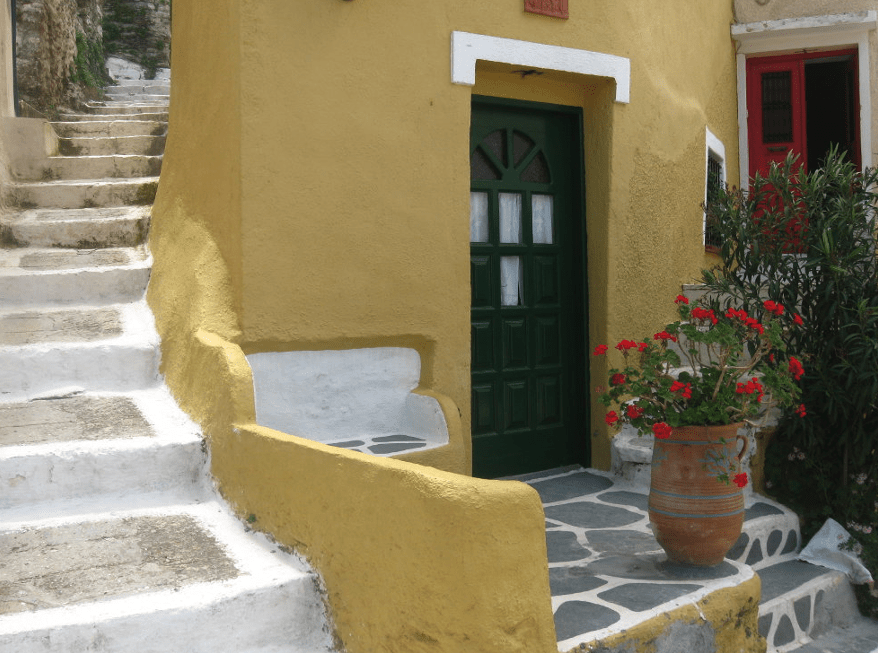
Once you have a location for your memory palace, find a sequence of locations to store memories. These locations will never change. You will always review them in the same order. If you don’t already have a preference, it may be better to arrange your locations in a clockwise direction, top to bottom, or left to right. Don’t worry about that for now though. In this example, the locations are chosen for you.
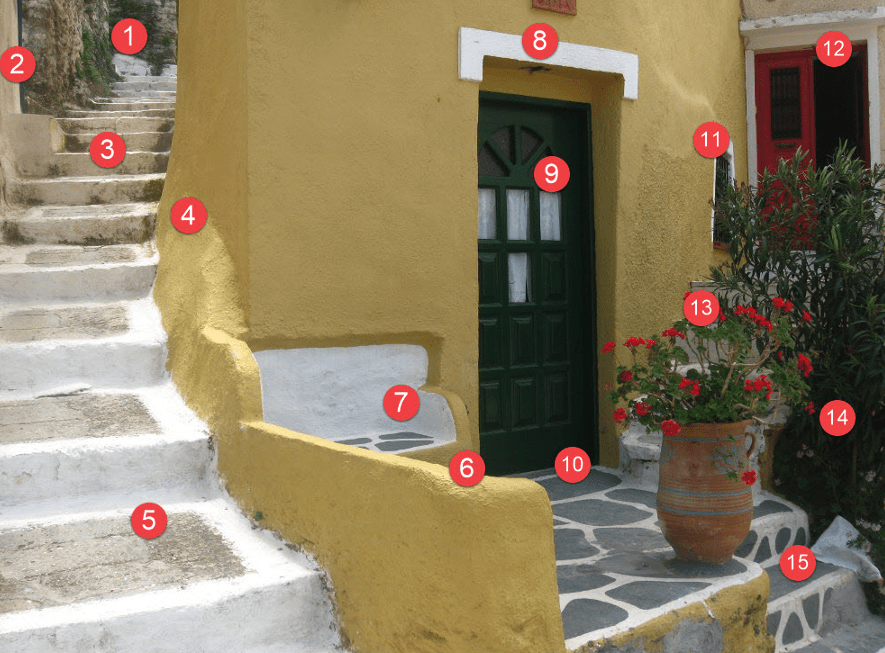
Notice how they follow a coherent journey around the location:
You aren’t limited to just a narrow area. You can use the same technique by walking around your town or a building, and choosing locations along the way.
In this example, the locations are:
The top of the stairs
The ledge next to the stairs
The stairs next to the ledge
The slanted part of the wall
The bottom step
On top of the wall
On the bench
In the hole above the door
Peeking through one of the windows
In front of the door
Hanging from the bars over the window
Inside of the doorway
Among the red flowers
Hiding in the bushes
On the step
It is helpful to mentally walk through the journey several times until you can do it with your eyes closed. Also try mentally walking through the journey backwards to be sure that you can do it in both directions.
Placing the Memories :
Basically, you’ll make visual representations (mnemonic images) for each of the things that you want to remember.
In this tutorial, we’ll use our example mind palace to memorize the first 15 elements in the periodic table of elements.
Let’s create and place images!
First Location :
Here is a reference image for the first few locations:
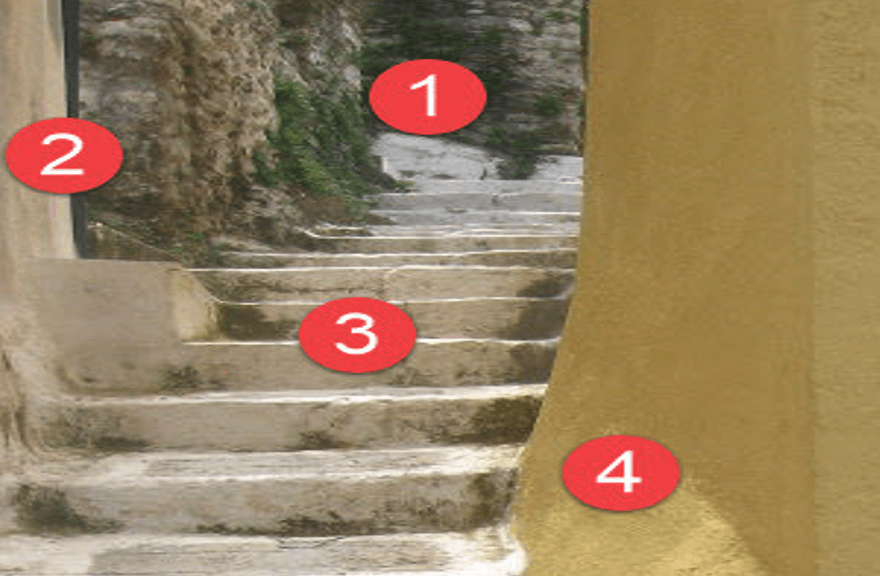
The first location in our memory palace is at the top of the stairs on the left.
The first element in the periodic table is hydrogen. We need a mnemonic image to represent hydrogen. It could be the Sun (which is mostly hydrogen), or maybe water (H20).
The process of creating mnemonic images becomes much easier with practice, so don’t be discouraged if it takes you a little effort in the beginning to think of something memorable.
I would imagine a picture of the Sun at location #1.
Second Location :
The second location is the ledge next to the stairs. The second element is helium. Imagine a helium balloon tied to the stone at position #2.
Third Location :
The third location is on the stairs next to the ledge. The third element is lithium. An image for lithium could be a lithium battery.
You could picture a battery rolling down the stairs.
Fourth Location :
The fourth location is on the sloping base of the wall. In this place, we will store a memory that represents beryllium.
The word “beryllium” reminds me of a berry. I would picture a berry being smashed against the wall.
Fifth Location :
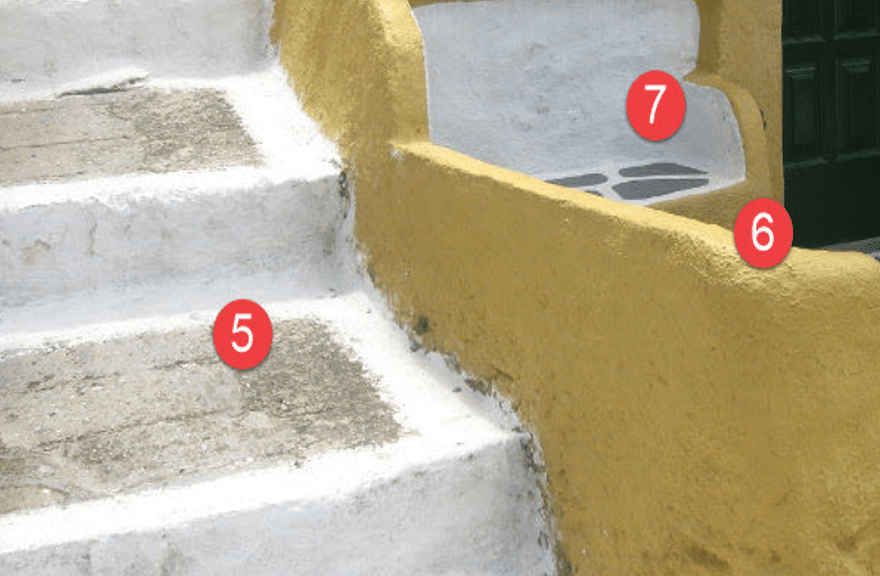
At the fifth location (the step), we will place an image to represent boron.
“Boron” sounds like “boar”, so place an image of a boar there.
Sixth Location :
The sixth element is carbon. A good mnemonic image for “carbon” is “car”. Imagine a car racing along the ledge.
Seventh Location :
The seventh element is nitrogen. An image that sounds like “nitrogen” is “knight”. Imagine a jousting knight racing across the step on a horse.
Eighth Location :
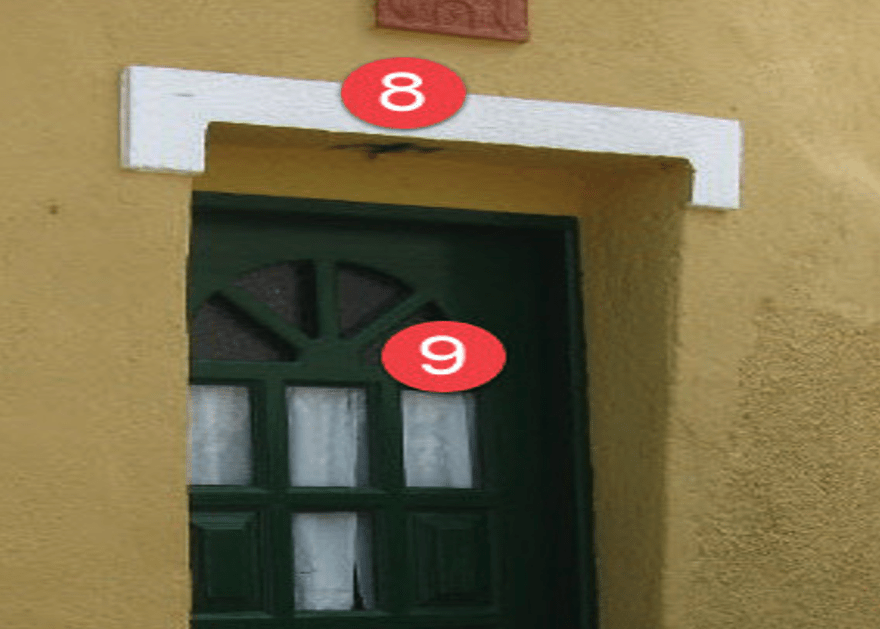
The eighth element is oxygen. When I think of oxygen, I imagine a space suit. I would picture an astronaut with an oxygen tank floating at position #8.
Ninth Location :
Element #9 is fluorine. “Fluorine” sounds like “fluoride”. I would imagine cleaning the windows with a toothbrush and toothpaste.
Tenth Location :
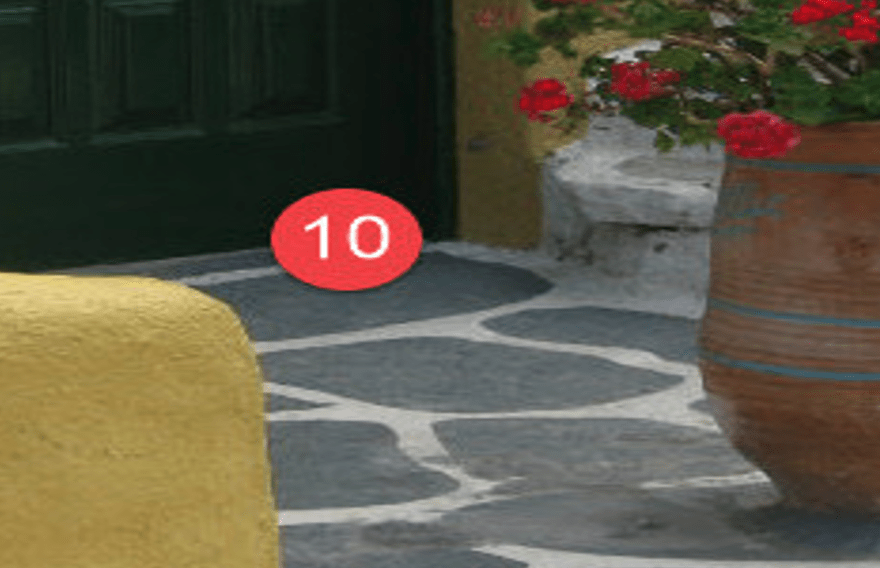
The tenth element is neon. Picture a neon sign at the foot of the door. Maybe you are smashing a neon sign on the stones there.
Eleventh Location :
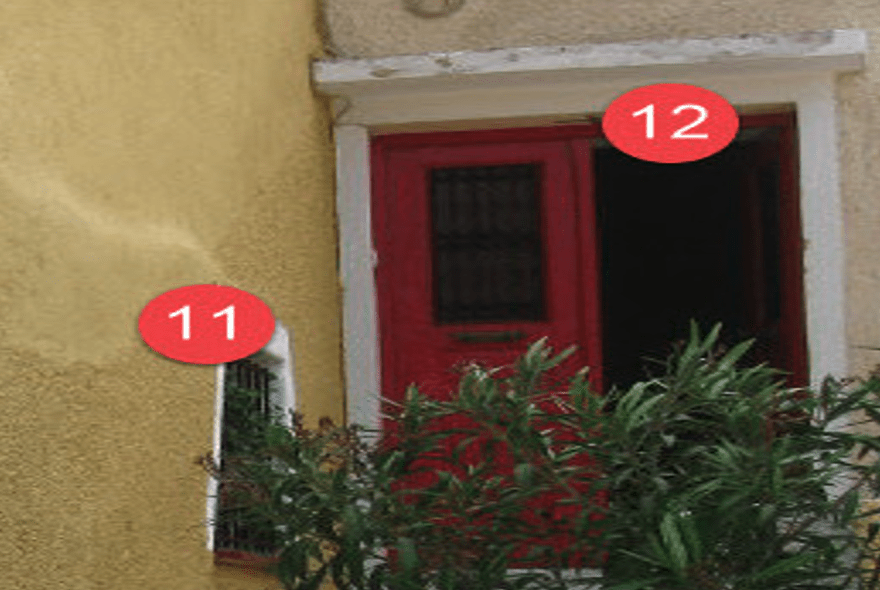
The eleventh element is sodium. You could picture a salt shaker embedded in the wall or being pushed out of the window.
Twelfth Location :
The twelfth element is magnesium. I would imagine a magnesium fire starter in the darkened doorway.
Thirteenth Location :
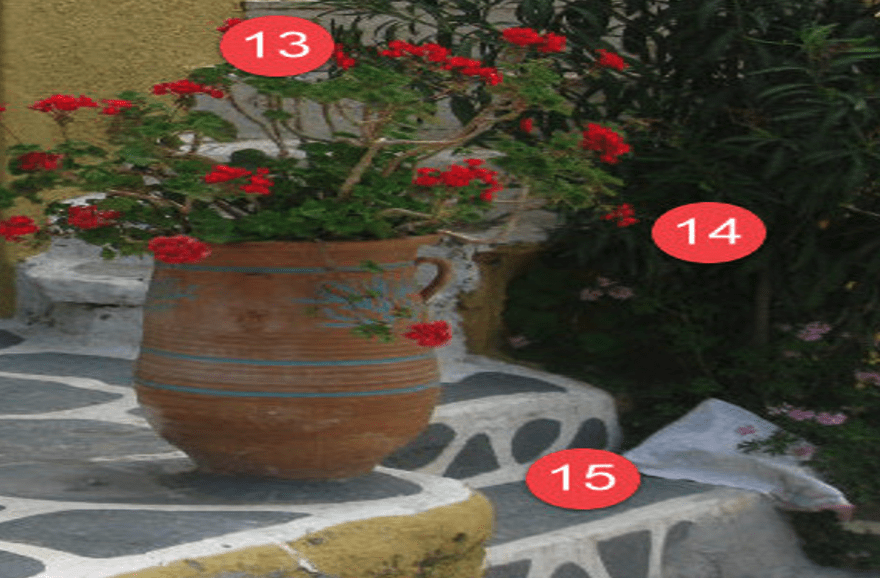
The thirteenth element is aluminium. Imagine aluminium foil wrapped around the plant.
Fourteenth Location :
The fourteenth element is silicon. Picture silicon computer chips at position #14.
Fifteenth Location :
The fifteenth element is phosphorous. All that a mnemonic image needs to do is get you past the tip of the tongue effect. “Phosphorous” has a similar beginning as “Fozzie Bear“. Picturing Fozzie Bear should be enough to help you recall phosphorous, at least after mentally walking through the memory palace a few times.
Source : https://artofmemory.com/wiki/How_to_Build_a_Memory_Palace



 العربية
العربية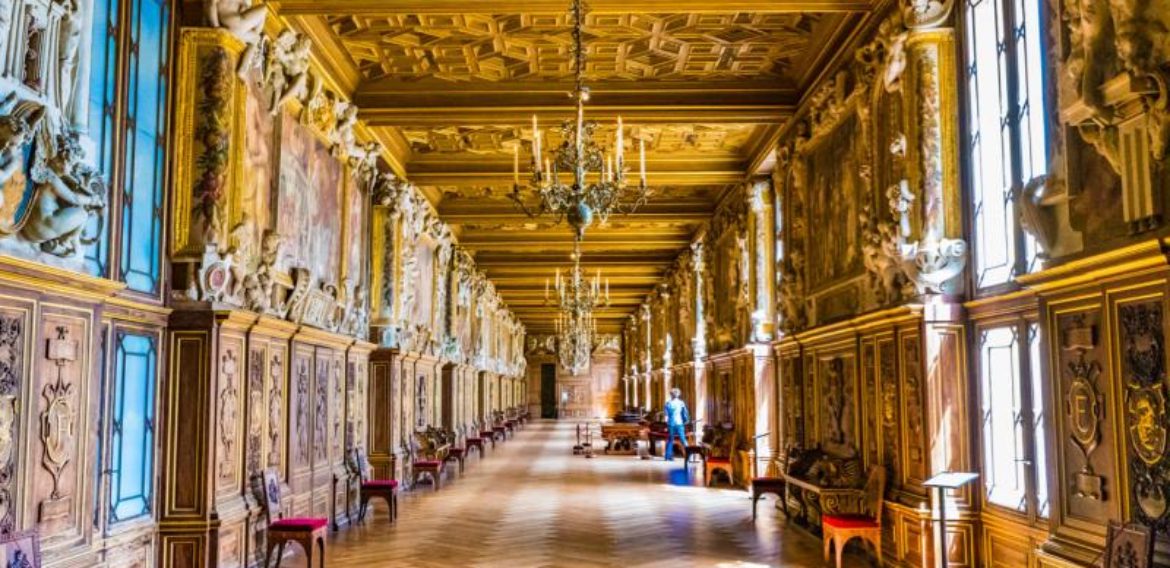
No Comments